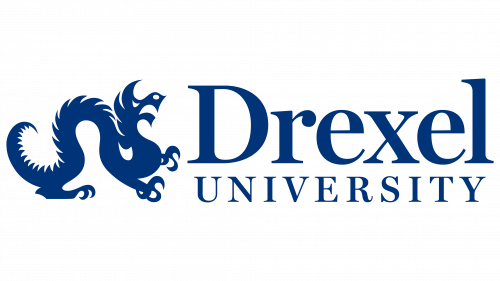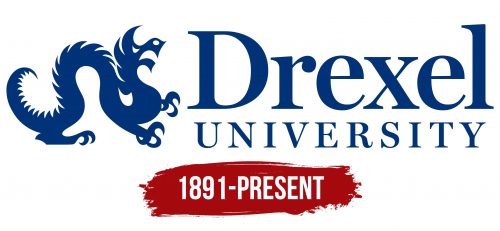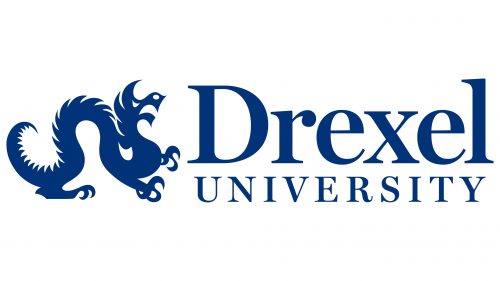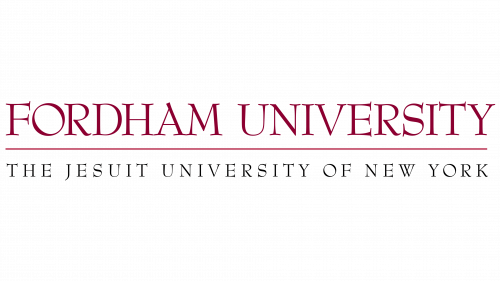The Drexel University logo is captivated by its mystical power as if shrouded in ancient secrets and carrying something remarkable. The university’s emblem appears to hold centuries of history, full of mysteries and great possibilities. Gaining admission to Drexel feels like accessing a hidden source of knowledge concealed behind the gates of wisdom. These gates are guarded by a mysterious figure, symbolizing protection and strength, making education at the university an exciting journey into science and discovery.
Upon entering this institution, every student feels that doors to the unknown are opening before them, offering incredible opportunities and unique possibilities for growth and self-improvement.
Drexel University: Brand overview
The Drexel Institute of Art, Science, and Industry was founded in 1891 by banker and philanthropist Anthony J. Drexel in Philadelphia, Pennsylvania, marking the beginning of the institution’s history. Drexel believed in the progressive idea that education should be accessible to everyone, regardless of gender, race, or social status.
The institute opened on December 17, 1891, offering business, science, technology, and the arts courses. With an initial enrollment of about 2,000 students, it quickly became one of the largest private educational institutions in the country.
From the beginning, one of its defining features was its public library, which soon became one of the largest in Philadelphia, emphasizing the commitment to making knowledge accessible to all.
In 1895, the institute launched a groundbreaking cooperative education program that allowed students to combine classroom learning with real-world work experience. This program has become a hallmark of the institution and remains a key part of its curriculum today.
After Anthony Drexel died in 1893, his family and trustees continued to guide the school’s growth. In the early 20th century, new programs such as home economics and engineering were added.
In 1914, the school became one of the first institutions in the U.S. to offer a degree in commercial engineering, a precursor to modern business management programs.
The institute saw significant growth during the 1920s and 1930s, with the construction of new buildings and the expansion of its curriculum. In 1936, it was granted the authority to confer bachelor’s degrees, elevating its status.
During World War II, the institution was critical in preparing professionals for the military industry. After the war, it expanded, adding new programs and departments.
1970, the institute officially became a full-fledged university, reflecting its growth into a comprehensive educational institution. New colleges, such as the College of Medicine (established in 1971), were created during this period.
Significant investments in technology were made during the 1980s and 1990s, making it one of the first universities to require personal computers for all students, solidifying its reputation as a leader in technological innovation.
In 1996, the institution became one of the first to offer online degree programs, expanding access to education.
Further expansion occurred in the 2000s. In 2002, the school acquired MCP Hahnemann University, which led to the creation of its College of Medicine.
In 2006, the university expanded beyond Philadelphia, opening its first campus outside the U.S. in Sacramento, California.
In 2011, the university added a School of Law to its academic offerings, further expanding its programs. 2014, it partnered with the American Academy in Rome to provide faculty and students with international opportunities.
The Innovation Neighborhood, a research and development hub designed to foster entrepreneurship, opened in 2015.
In 2018, the school collaborated with Brandywine Realty Trust to develop Schuylkill Yards, an innovation district featuring residential, commercial, and academic spaces.
By 2020, the institution had established itself as a leading research university with highly regarded engineering, business, medicine, and design programs. Its cooperative education program remains one of the largest in the nation.
Despite global challenges, the university continued to invest in research and development in 2021 and 2022, strengthening its role in STEM education and interdisciplinary research. By 2023, the school had advanced even further, focusing on innovation in research, education, and community engagement.
The Drexel Dragons symbolize athletic strength and dedication at Drexel University. Competing in NCAA Division I as part of the Colonial Athletic Association (CAA), the Dragons teams are known for their energy and determination. With strong basketball, swimming, soccer, field hockey, and track and field programs, the Drexel Dragons embody a spirit of competition and leadership in the sports arena. These athletes proudly represent their university, striving for victories while upholding high standards both in sports and academics.
Throughout its 130-year history, the institution has grown from a small institute into a major research hub while maintaining its core values of innovation, hands-on learning, and providing access to education for all.
Meaning and History
What is Drexel University?
This private research university is known for its innovative cooperative education program, combining traditional learning with practical work experience. This method allows students to alternate academic semesters with paid work, allowing them to gain up to eighteen months of professional experience before graduation. The university stands out for its cutting-edge facilities, such as the ExCITe Center, which promotes interdisciplinary collaboration and innovation. Comprising 15 colleges and schools, the university’s main research areas include engineering, business, and design. Unlike traditional semesters, it operates on a quarter system, creating a more dynamic learning environment. The university is also known for its online programs and emphasis on civic engagement, encouraging students to apply their knowledge to solve real-world issues in local communities.
1891 – today
The emblem of Drexel University features a blue dragon curled beside the university’s name. This powerful and magical creature became the mascot of Drexel University, though even the university’s archives do not contain a definitive explanation as to why it was chosen. The first mention of the mascot dates back to 1928 when the student publication “The Drexel Triangle” referenced the dragon about the university’s football team. Over time, the name extended to all sports teams, and a visual image of the dragon was created, with smoke billowing from its nostrils.
The modern depiction of the logo closely resembles the original design, which has remained a symbol for students over the decades. The mascot inspires students to be creative and desire to make an impact in academic fields. The dragon is associated with strength, power, protection, and wisdom. Like a mythical guardian of treasures, the emblem symbolizes the protector of the source of knowledge, which is of the greatest value.
The dragon also serves as a heraldic element, adding a touch of nobility and antiquity to the logo and highlighting the university’s historical significance. The name “Drexel” is highlighted in an elegant blue font, symbolizing the benefactor and founder Anthony J. Drexel and emphasizing qualities such as professionalism, logical thinking, and the pursuit of knowledge. The blue shade in the emblem strengthens the connection to intellectual tradition and high academic standards.
The Seal
The university seal features two crossed torches joined together at their bases. These torches, symbolizing sources of light, illuminate the path to knowledge and emphasize the equal importance of education for both men and women. Above the torches is a triangle, with each side inscribed “art, science, and industry”—the three key fields in which the university provides education. These words reference the institution’s original name, the Institute of Art, Science, and Industry.
A book at the center of the triangle symbolizes knowledge and learning as the foundation of academic activity. The outer circle of the seal is adorned with the university’s name and its founding year, 1891. This element highlights the deep historical connection to the past and the importance of passing on this legacy to future generations. The university seal preserves symbols of its history, immortalizing the institution’s mission in a visual form.






